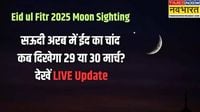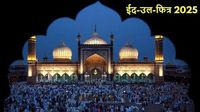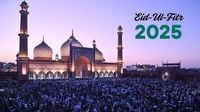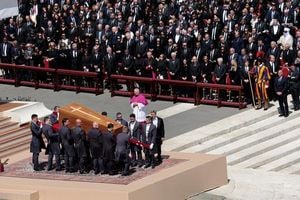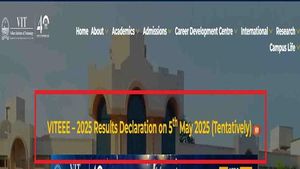As the holy month of Ramadan draws to a close, Muslims around the world are eagerly anticipating the celebration of Eid-ul-Fitr, a festival that marks the end of fasting and the beginning of Shawwal, the tenth month of the Islamic calendar. This year, the date of Eid is particularly significant as it depends on the sighting of the moon, a tradition that holds deep cultural and religious importance.
In Saudi Arabia and the UAE, the crescent moon for Shawwal was officially sighted on the evening of March 29, 2025, confirming that Eid-ul-Fitr will be celebrated on March 30, 2025. The announcement was made by the International Astronomy Center, which noted, "The Crescent for the month of Shawwal 1446 was SEEN in Saudi Arabia today subsequently tomorrow is the beginning of the month of Shawwal 1446." This sighting has led to a flurry of preparations across the region, with families busy shopping for new clothes and planning festive meals.
The UAE government announced a public holiday from Shawwal 1 to 3, allowing families to come together and celebrate this joyous occasion. In Saudi Arabia, the Supreme Court has urged citizens to report any sightings of the moon, emphasizing the communal aspect of the celebration. They stated, "If anyone sees the moon, whether with the naked eye or through binoculars, they should inform the nearest court and testify. This tradition allows for a unified celebration of Eid across the country."
However, not all countries in the region will celebrate Eid on the same day. Oman, for instance, announced that it will observe Eid-ul-Fitr on March 31, 2025, due to the moon not being sighted on March 29. Similarly, Iran is also expected to celebrate Eid on March 31, with the International Astronomy Center noting that the moon is anticipated to be visible on March 30 after sunset.
In Pakistan, the date for Eid is tentatively set for March 31, 2025, as officials await confirmation of the moon sighting, while in India, Eid is likely to be celebrated on either March 31 or April 1, depending on the visibility of the moon. The Islamic month of Ramadan began on March 1, 2025, in Saudi Arabia, while in India, it started a day later on March 2.
As families prepare for Eid, the atmosphere is filled with excitement. Markets are bustling with shoppers purchasing sweets and traditional dishes, such as sheer khurma, a sweet dish made from vermicelli, milk, and dates, which is a staple during the festival. The day of Eid is marked by special prayers held in mosques, where community members gather to express gratitude to Allah for the strength shown during Ramadan and to seek forgiveness for past transgressions.
The significance of Eid-ul-Fitr extends beyond the festivities; it is a reminder of unity, compassion, and generosity. On this day, it is customary for Muslims to give Zakat al-Fitr, a form of charity intended to purify those who fast from any indecent act or speech and to help the poor and needy partake in the celebrations. This charitable act reinforces the communal spirit of the festival.
While Eid is a time for joy and celebration, it also serves as a moment of reflection on the spiritual journey undertaken during Ramadan. The festival symbolizes the end of a month of fasting, prayer, and community, and the beginning of a new month filled with hope and unity.
In summary, the sighting of the moon on March 29 confirmed that Eid-ul-Fitr will be celebrated on March 30 in Saudi Arabia and the UAE, while neighboring countries like Oman and Iran will mark the festival on March 31. As families come together to celebrate, the essence of Eid remains rooted in gratitude, generosity, and the strengthening of community bonds.

